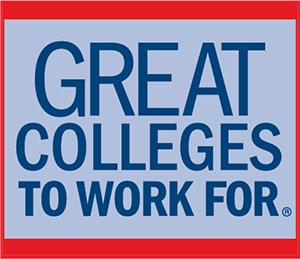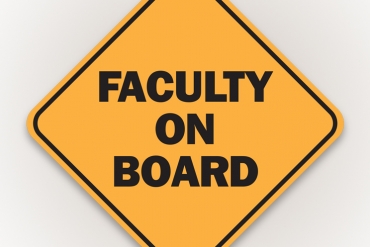This article appeared on The Chronicle of Higher Education website. A version of this article appeared in The Chronicle of Higher Education June 23, 2017 issue.
The future of Ohio Wesleyan University was up for a vote this past March, and Rock F. Jones wasn’t sure which way it was going to go.
As president, he had supported a plan to boost struggling enrollment at the small private college by adding a raft of new majors, including business administration, data analytics, and nutrition. He knew some faculty members felt that adding such career-oriented programs would betray the college’s liberal-arts tradition. If enough of them voted against the new majors, they would go nowhere.
Higher education’s tradition of shared governance makes leaders and faculty members partners in such endeavors, but it can also put them at odds, with each side feeling unheard and frustrated. For administrators seeking faculty support for a major change, there are no simple tricks; rather, it takes long-term relationship building and canny strategy, say veterans of the process. Administrators must also understand that not everyone will get on board, and know how to move on anyway.
Many industries and organizations are in tumult these days, but higher education is especially sluggish in responding to continuing disruption, according to Chris McGoff, co-founder of the Clearing, a management-consulting company that sometimes works with colleges. “The environmental dynamics pounding on these universities are off the scale,” he says, but many colleges find it difficult to convince faculty members that financial and other pressures make change necessary. “There are these huge brick walls and these marble statues, and there are so many things around them saying, ‘I’m safe, nothing can get to me in here,’” he says.
The pressures — and the pressure to respond — have only worsened the relationship between leaders and faculty members. “Everybody is angrier and more frustrated than they were 20 years ago,” says David D. Perlmutter, dean of the College of Media and Communication at Texas Tech University (and a regular contributor to The Chronicle).Presidents armed with board mandates and plans to reshape their institutions sometimes hit a wall of internal resistance. “A lot of administrators feel like some faculty have become the Party of No,” he says: “They just oppose on principle.” But watching grand visions collapse in recent years has made harried professors more skeptical about leaders’ motives. They wonder: “Is this actually a solution that you’re applying to a real problem, or are you following some sort of checklist for your administration career?” Mr. Perlmutter says.
At Ohio Wesleyan, the need to consider change was clear. The university’s enrollment has risen and fallen unpredictably in recent years. Freshman enrollment climbed from 464 in the fall of 2015 to 514 last fall, but this fall’s freshman class is still well short of 500. In 2011, a faculty majority voted to introduce “The OWU Connection,” an effort that combined interdisciplinary studies with experiential learning. While many faculty members remain enthusiastic about its academic promise, the program has failed to stabilize enrollment.
The announcement in 2015 by Sweet Briar College, another small institution that had been struggling with enrollment, that it would close convinced Charles L. Stinemetz, Ohio Wesleyan’s provost, that something needed to be done. (Sweet Briar ultimately survived,with financial help from alumnae.) He stood up at a faculty meeting and openly discussed the financial challenges facing Ohio Wesleyan, then encouraged the faculty “to be partners and see how we can become a more attractive institution to prospective students.”

Zackariah C. Long, an associate professor of English, says it was also clear to him and many of his colleagues that something needed to be done, and soon. But first there would be discussion and votes. “I get the impression that often administrators want transformative change without considering how much work and effort transformation entails,” he says. “Faculty, for good reason, want to proceed in a more methodical and considered fashion. But that can lead to foot-dragging. So there is a dance.”
Perhaps the most important step to winning faculty “buy-in” is for campus leaders to drop the notion that that’s what they’re doing. “Even using the language excludes [faculty members] from the beginning,” says Richard K. Boyer, a senior consultant at ModernThink, a management-consulting firm that often works with colleges and conducts The Chronicle’s annual “Great Colleges to Work For” survey. “It suggests, ‘Hey I’ve got a vision, I want you to buy into it.’”
If campus leaders don’t want faculty members to feel manipulated, they should approach them as collaborators — not as “yes” votes in waiting. Perhaps the most critical condition for successful — and enthusiastic — collaboration is establishing that a problem exists to be solved. Until about four years ago, students at Texas Tech left Lubbock each summer for their homes in Dallas or Houston, where they socked away credit hours by taking community-college courses, according to Mr. Perlmutter. Texas Tech lost out on those tuition dollars and had no quality control over the courses. “Faculty recognized that it was a problem, so there wasn’t even a need to point out there was a problem,” he says.
If faculty understand that there’s a problem to be solved, they can help solve it — and it probably won’t be solved without them. Mr. Perlmutter suggested to his faculty colleagues in the College of Media and Communication that online classes might be a way to retain students over the summer, and then left it to professors to decide whether it was feasible. The college now enrolls more than 1,500 students online. Such initiatives have to be faculty-driven because “they are the implementers,” he says.
Any conversation about problems or solutions will go better if administrators already have a good rapport with individual faculty members. Many new presidents go on “listening tours,” but some don’t build and maintain faculty relationships. “It either gets kind of de-prioritized, or in some cases gets delegated to the provost,” Mr. Boyer says. But if administrators cultivate relationships with professors during good times, when things get tough, “you’re not starting from scratch.”

And there is no better faculty evangelist for a new idea than a fellow faculty member. Mr. Jones, Ohio Wesleyan’s president, says he learned early on that the small group of faculty members he meets with weekly as part of the Committee on University Governance provides “an important part of the reporting mechanism to the faculty.” Once the idea of adding majors was entertained and discussed in an open summit meeting, professors were invited to ponder and devise the programs, which they then presented to their colleagues.
A mandate for new programs from Mr. Jones would never have been accepted by the faculty, says Chris Wolverton, a professor of botany and microbiology and chair of the governance committee. The administration introduced data and ideas at key junctures and provided resources, but otherwise left the question of new majors up to professors, he says.
There was little faculty enthusiasm at first, Mr. Wolverton says, but those working on ideas for new majors soon made up for it: “People got excited about the programs they envisioned participating in or contributing to.”
When the full faculty began voting on individual new majors, the role of his faculty peers ultimately won over Mr. Long, even though he felt the process was hurried and provided little evidence that the plan would boost enrollment. “Ultimately, it comes down to colleagues who stand up before you and defend an academic program on its merits,” he says. “You decide to put your confidence in your colleagues.”
Still, there were some faculty holdouts, who expressed their anxiety “very vocally.” the president says. Lee M. Fratantuono, a professor of classics, was among the vigorous skeptics. He considers the push for new majors a hasty move founded on “the unquestioned assumption that we must have new things.” Enrollment in his department has grown during his 12 years at Ohio Wesleyan, he notes, from about four majors in 2005 to around two dozen today. But when the only other tenured professor of classics retired in 2013, he was replaced by a contingent faculty member. Mr. Fratantuono says he might be more supportive of new majors if they were part of a more holistic curricular review, or “if something tangible had been done to support existing programs other than simply repeating the mantra of, ‘We value all of our programs.’”
Professors may resist an initiative because they’re “not feeling heard, valued, respected, or included” by administrators, says Mr. Boyer, the workplace consultant. But even in the most congenial workplaces, “there’s still typically a small percentage of the population that, for lack of a better term, is committed to be miserable. In higher ed, that percentage is higher.”
Mr. McGoff, the management consultant, says the adoption of new ideas follows a similar pattern across organizations, with early adopters often persuading many of their peers to support the plan and a small, often vocal, number refusing to go along no matter what. “They just fatigue everybody, and no one knows how to shut them up because of this professionalism and collegiality.”
Opposing voices must be heard and acknowledged, says Mr. Boyer. When working with resistant faculty members, he tells them he understands that they may not want to be there and may not support the project being discussed. That simple outreach can soften resisters and turn them into participants. “Try to find a way to partner with them without letting them dominate — that’s the trick.”
At Ohio Wesleyan, the president says he valued the “thoughtful opposition” raised during the proceedings but adds: “Often there’s a silent majority that hasn’t been heard.” The faculty eventually voted overwhelmingly to support the new majors, which will involve new faculty hires and will start enrolling students this fall.
The process underscored the leadership’s dependence on the faculty to succeed, and its need to demonstrate good faith and transparency, says Mr. Stinemetz, the provost. Those practices help faculty members feel like partners, he says. And if they are partners, “They have to take some responsibility.”
Lee Gardner writes about the management of colleges and universities, higher-education marketing, and other topics. Follow him on Twitter @_lee_g, or email him at lee.gardner@chronicle.com.



